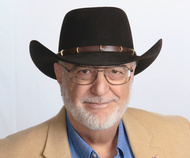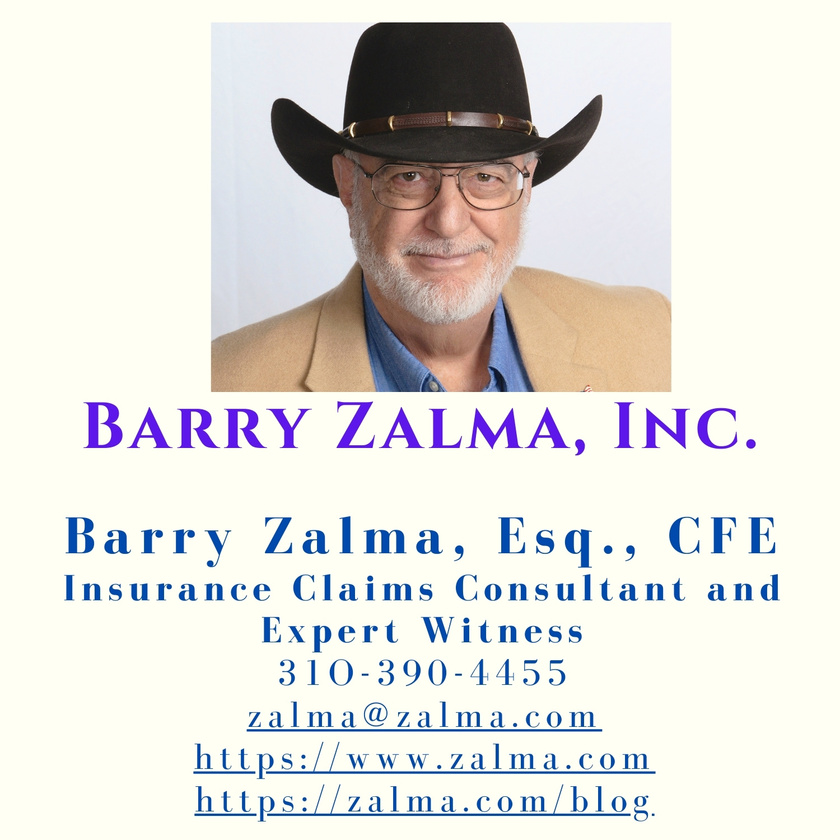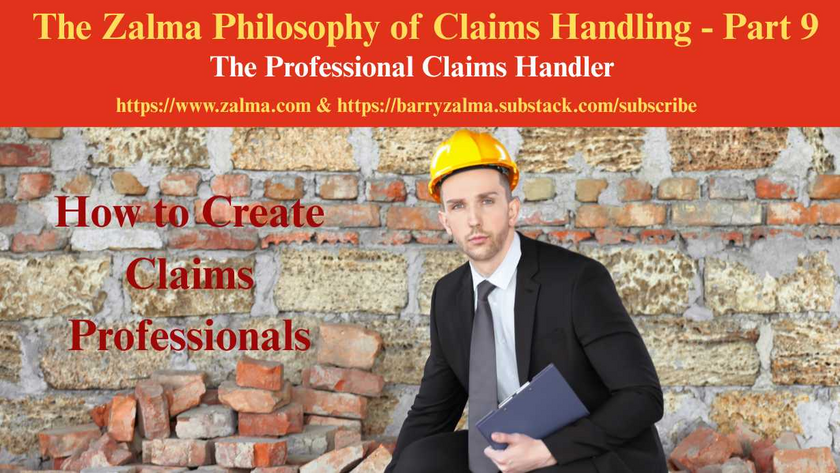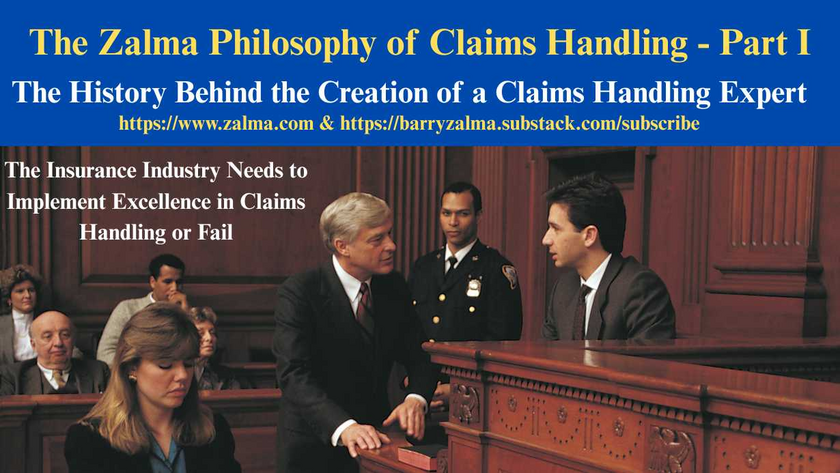
Punching a Person in the Face is an Excluded Intentional Act
Read the full article at https://lnkd.in/gymwEPRG and at https://zalma.com/blog and see the full video at https://lnkd.in/gTFqywxD and at https://lnkd.in/g_9GtYNY
See the full video at https://rumble.com/v1bvh2t-video-proves-excluded-intentional-act.html and at
Alphonso Williams, appealed a judgment granting the motion for summary judgment of the defendant, ANPAC Louisiana Insurance Company (“ANPAC”). The trial court dismissed plaintiff’s claims against ANPAC, finding the intentional act exclusion in the insurance policy precluded coverage for the injury caused by the insured, Christopher Hart.
In Alphonso B. Williams v. Christopher L. Hart & ABC Insurance Company, No. 54,604-CA, Court of Appeals of Louisiana, Second Circuit (July 6, 2022) the Court of Appeal looked to the video of a battery when Hart Punched Williams in the face without hesitation.
FACTS
On February 2, 2020, Alphonso Williams and Christopher Hart attended a Super Bowl event at a Holiday Inn hotel in Shreveport. At approximately 7:30 p.m., Hart violently punched Williams in the face, knocking him down. A surveillance camera recorded the incident.
At the time of the incident, Hart was insured by a homeowner’s policy issued by ANPAC. The insurance policy contains an exclusion of coverage for bodily injury “which is caused intentionally by . . . any insured, even if the resulting injury or damage is different than expected or intended. This exclusion shall not apply to an intentional act arising out of any insured’s use of lawful force to protect persons or property.”
ANPAC denied Williams’ insurance based on the exclusion.
Williams sued for damages against the defendants, Christopher Hart and ANPAC. After taking the depositions of Williams and Hart, ANPAC filed a motion for summary judgment alleging the insurance policy did not provide coverage because plaintiff’s injuries were caused by the intentional act of the insured.
The trial court granted ANPAC’S motion for summary judgment based on the policy language, the video and the applicable law. The trial court granted summary judgment in favor of ANPAC, dismissing plaintiff’s claims against ANPAC.
DISCUSSION
Summary judgment must be granted if the motion, memorandum and supporting documents show there is no genuine issue as to material fact and that the mover is entitled to judgment as a matter of law.
An insurance policy is a contract between the parties and should be construed using the general rules of contract interpretation.
ANPAC submitted the surveillance video to support its position that the insurance policy did not provide coverage because plaintiff’s injuries were caused by Hart’s intentional act of hitting plaintiff. The video of the incident shows Hart approach and then punch plaintiff after a brief exchange of words.
In their briefs, plaintiff and Hart do not dispute that Hart intentionally hit plaintiff, but assert their deposition testimony creates a genuine issue of material fact as to whether Hart acted in self-defense. Hart testified in his deposition that earlier in the evening, plaintiff had bumped into him and verbally insulted him. Hart stated that at the time of the incident, he felt afraid of plaintiff because of his earlier acts at the party and the existing antagonistic relationship between the two of them.
The Court of Appeal noted that Hart’s subjective belief that force was necessary is only one of two factors which must be proved to establish a self-defense claim. In asserting self-defense, an actor must show any force used was both reasonable and apparently necessary to prevent an offense against him.
A person making a self-defense claim is required to show not only that subjectively, the force used was apparently necessary, but also that objectively, such force was reasonable under the circumstances. A person who is the aggressor cannot claim the right of self-defense unless he withdraws from the conflict in good faith.
In the video, plaintiff is seen standing in the bar area prior to the incident when Hart walks directly up to plaintiff. The video shows they briefly exchanged words and Hart then punched plaintiff in the face.
ANPAC established by the video that Hart intentionally punched plaintiff after initiating the encounter which caused plaintiff’s injuries. Additionally, the video shows plaintiff did not grab or hit Hart before being punched. The Court of Appeal concluded that the video evidence supported a finding that Hart was the aggressor who cannot claim self-defense.
Hart’s use of force was unreasonable given his initiation of the physical confrontation when he could have kept his distance if actually afraid of plaintiff. Because Hart failed to show that, objectively, his use of force was reasonable under the circumstances, plaintiff has not demonstrated a genuine issue of material fact exists as to whether Hart acted in self-defense.
The trial court’s judgment was affirmed. Costs of the appeal were assessed one-half to appellant, Alphonso Williams, and one-half to appellee, Christopher Hart.
ZALMA OPINION
Mr. Hart was unwilling to take responsibility for his wrongful acts. There was no dispute that he hit Williams in the face. The video made clear that Williams did nothing to encourage the beating. The insurance policy clearly and unambiguously excluded intentional acts. The insurer proved the punch thrown by Hart was intentional and excluded. The parties wasted their time trying to get the insurer to pay and now Mr. Hart may find he must pay from his assets whatever judgment Williams will get from the trial court for the battery.
(c) 2022 Barry Zalma & ClaimSchool, Inc.
Barry Zalma, Esq., CFE, now limits his practice to service as an insurance consultant specializing in insurance coverage, insurance claims handling, insurance bad faith and insurance fraud almost equally for insurers and policyholders. He practiced law in California for more than 44 years as an insurance coverage and claims handling lawyer and more than 54 years in the insurance business. He is available at http://www.zalma.com and [email protected].
Subscribe and receive videos limited to subscribers of Excellence in Claims Handling at locals.com https://zalmaoninsurance.locals.com/subscribe.
Subscribe to Excellence in Claims Handling at https://barryzalma.substack.com/welcome.
Write to Mr. Zalma at [email protected];
http://www.zalma.com; http://zalma.com/blog; daily articles are published at https://zalma.substack.com.
Go to the podcast Zalma On Insurance at https://anchor.fm/barry-zalma; Follow Mr. Zalma on Twitter at https://twitter.com/bzalma; Go to Barry Zalma videos at Rumble.com at https://rumble.com/c/c-262921; Go to Barry Zalma on YouTube- https://www.youtube.com/channel/UCysiZklEtxZsSF9DfC0Expg; Go to the Insurance Claims Library – https://zalma.com/blog/insurance-claims-library/

Insurer’s Exclusion for Claims of Assault & Battery is Effective
Post 5250
Read the full article at https://lnkd.in/gBzt2vw9, see the video at https://lnkd.in/gEBBE-e6 and at https://lnkd.in/gk7EcVn9, and at https://zalma.com/blog plus more than 5250 posts.
Bar Fight With Security is an Excluded Assault & Battery
In The Cincinnati Specialty Underwriters Insurance Company v. Mainline Private Security, LLC, et al., Civil Action No. 24-3871, United States District Court, E.D. Pennsylvania (December 16, 2025) two violent attacks occurred in Philadelphia involving young men, Eric Pope (who died) and Rishabh Abhyankar (who suffered catastrophic injuries). Both incidents involved security guards provided by Mainline Private Security, LLC (“Mainline”) at local bars. The estates of the victims sued the attackers, the bars, and Mainline for negligence and assault/battery. The insurer exhausted a special limit and then denied defense or indemnity to Mainline Private Security.
INSURANCE COVERAGE
Mainline had purchased a commercial ...
Marine Insurer May Dispose of Vessel to Avoid Waste
Post 5249
Read the full article at https://lnkd.in/gfn_UHdp, see the video at https://lnkd.in/gDWVccnr and at https://lnkd.in/gv9nsBqk, and https://zalma.com/blog plus more than 5200 posts.
In Western World Insurance Company v. The Estate Of Shawn Arsenault, No. 25-cv-13413-PGL, United States District Court, D. Massachusetts (December 17, 2025) the USDC was asked to resolve a marine insurance dispute after the sinking of the F/V Seahorse, a commercial fishing vessel, off Cape Cod on June 8, 2025. The vessel’s owner and operator, Shawn Arsenault, died in the incident.
Western World Insurance Company issued a hull insurance policy for the vessel. With no personal representative yet appointed for the estate, the insurer cannot determine the proper payee for the insurance proceeds.
The insurer paid for the vessel’s recovery and removal, and the vessel is now with a salvage company, incurring substantial storage fees. The insurer determined the loss is covered under the ...
Marine Insurer May Dispose of Vessel to Avoid Waste
Post 5249
Read the full article at https://lnkd.in/gfn_UHdp, see the video at https://lnkd.in/gDWVccnr and at https://lnkd.in/gv9nsBqk, and https://zalma.com/blog plus more than 5200 posts.
In Western World Insurance Company v. The Estate Of Shawn Arsenault, No. 25-cv-13413-PGL, United States District Court, D. Massachusetts (December 17, 2025) the USDC was asked to resolve a marine insurance dispute after the sinking of the F/V Seahorse, a commercial fishing vessel, off Cape Cod on June 8, 2025. The vessel’s owner and operator, Shawn Arsenault, died in the incident.
Western World Insurance Company issued a hull insurance policy for the vessel. With no personal representative yet appointed for the estate, the insurer cannot determine the proper payee for the insurance proceeds.
The insurer paid for the vessel’s recovery and removal, and the vessel is now with a salvage company, incurring substantial storage fees. The insurer determined the loss is covered under the ...
Zalma’s Insurance Fraud Letter
Read the full article at https://lnkd.in/dG829BF6; see the video at https://lnkd.in/dyCggZMZ and at https://lnkd.in/d6a9QdDd.
ZIFL Volume 29, Issue 24
Subscribe to the e-mail Version of ZIFL, it’s Free! https://visitor.r20.constantcontact.com/manage/optin?v=001Gb86hroKqEYVdo-PWnMUkcitKvwMc3HNWiyrn6jw8ERzpnmgU_oNjTrm1U1YGZ7_ay4AZ7_mCLQBKsXokYWFyD_Xo_zMFYUMovVTCgTAs7liC1eR4LsDBrk2zBNDMBPp7Bq0VeAA-SNvk6xgrgl8dNR0BjCMTm_gE7bAycDEHwRXFAoyVjSABkXPPaG2Jb3SEvkeZXRXPDs%3D
Zalma’s Insurance Fraud Letter (ZIFL) continues its 29th year of publication dedicated to those involved in reducing the effect of insurance fraud. ZIFL is published 24 times a year by ClaimSchool and is written by Barry Zalma. It is provided FREE to anyone who visits the site at http://zalma.com/zalmas-insurance-fraud-letter-2/
Zalma’s Insurance Fraud Letter
Merry Christmas & Happy Hannukah
Read the following Articles from the December 15, 2025 issue:
Read the full 19 page issue of ZIFL at ...
The Professional Claims Handler
Post 5219
Posted on October 31, 2025 by Barry Zalma
An Insurance claims professionals should be a person who:
Can read and understand the insurance policies issued by the insurer.
Understands the promises made by the policy.
Understand their obligation, as an insurer’s claims staff, to fulfill the promises made.
Are competent investigators.
Have empathy and recognize the difference between empathy and sympathy.
Understand medicine relating to traumatic injuries and are sufficiently versed in tort law to deal with lawyers as equals.
Understand how to repair damage to real and personal property and the value of the repairs or the property.
Understand how to negotiate a fair and reasonable settlement with the insured that is fair and reasonable to both the insured and the insurer.
How to Create Claims Professionals
To avoid fraudulent claims, claims of breach of contract, bad faith, punitive damages, unresolved losses, and to make a profit, insurers ...

The History Behind the Creation of a Claims Handling Expert
The Insurance Industry Needs to Implement Excellence in Claims Handling or Fail
Post 5210
This is a change from my normal blog postings. It is my attempt. in more than one post, to explain the need for professional claims representatives who comply with the basic custom and practice of the insurance industry. This statement of my philosophy on claims handling starts with my history as a claims adjuster, insurance defense and coverage lawyer and insurance claims handling expert.
My Training to be an Insurance Claims Adjuster
When I was discharged from the US Army in 1967 I was hired as an insurance adjuster trainee by a professional and well respected insurance company. The insurer took a chance on me because I had been an Army Intelligence Investigator for my three years in the military and could use that training and experience to be a basis to become a professional insurance adjuster.
I was initially sat at a desk reading a text-book on insurance ...














